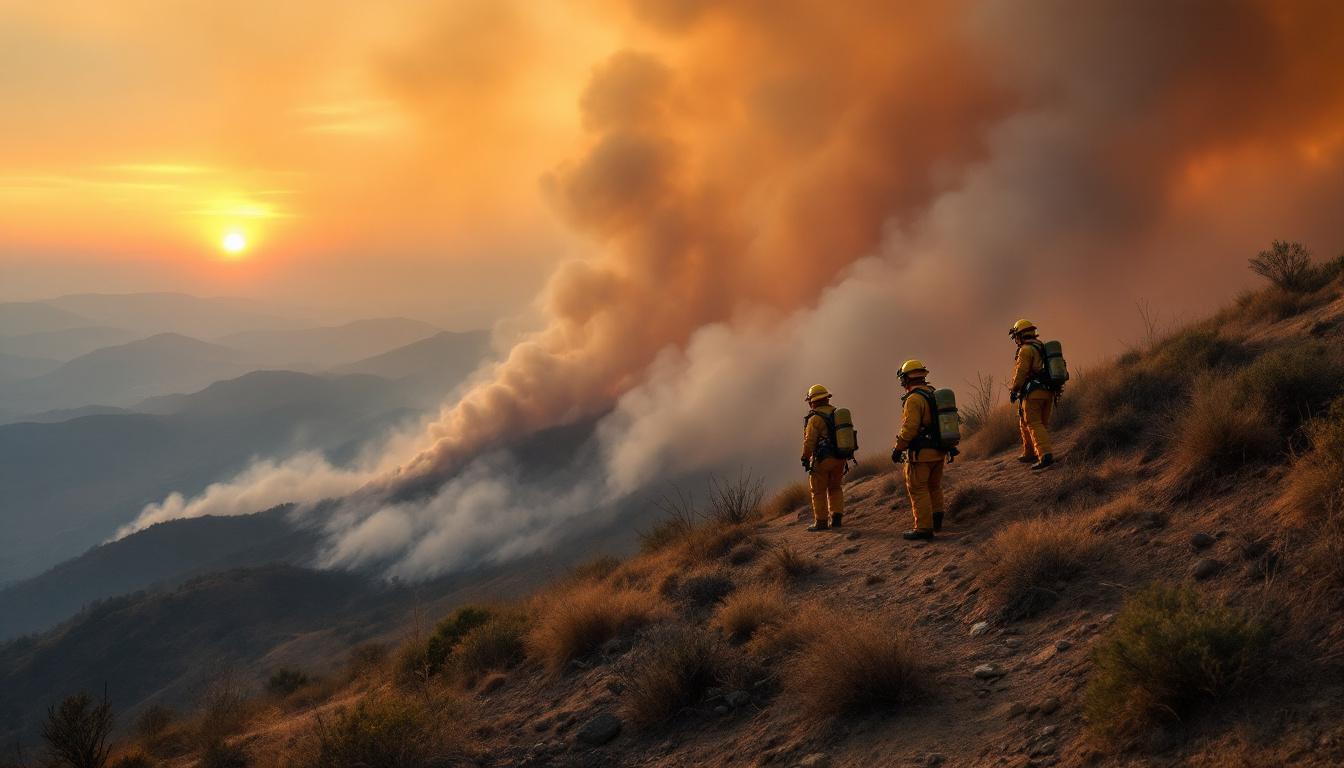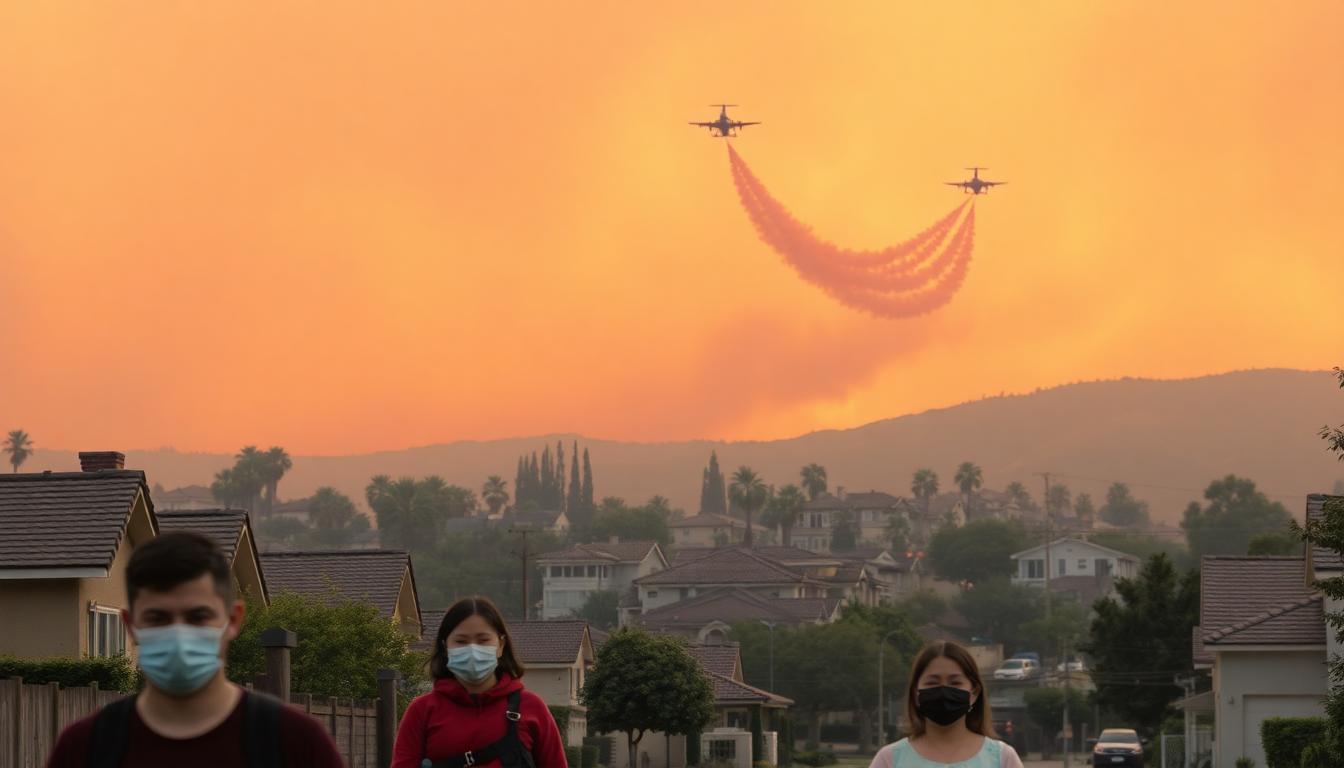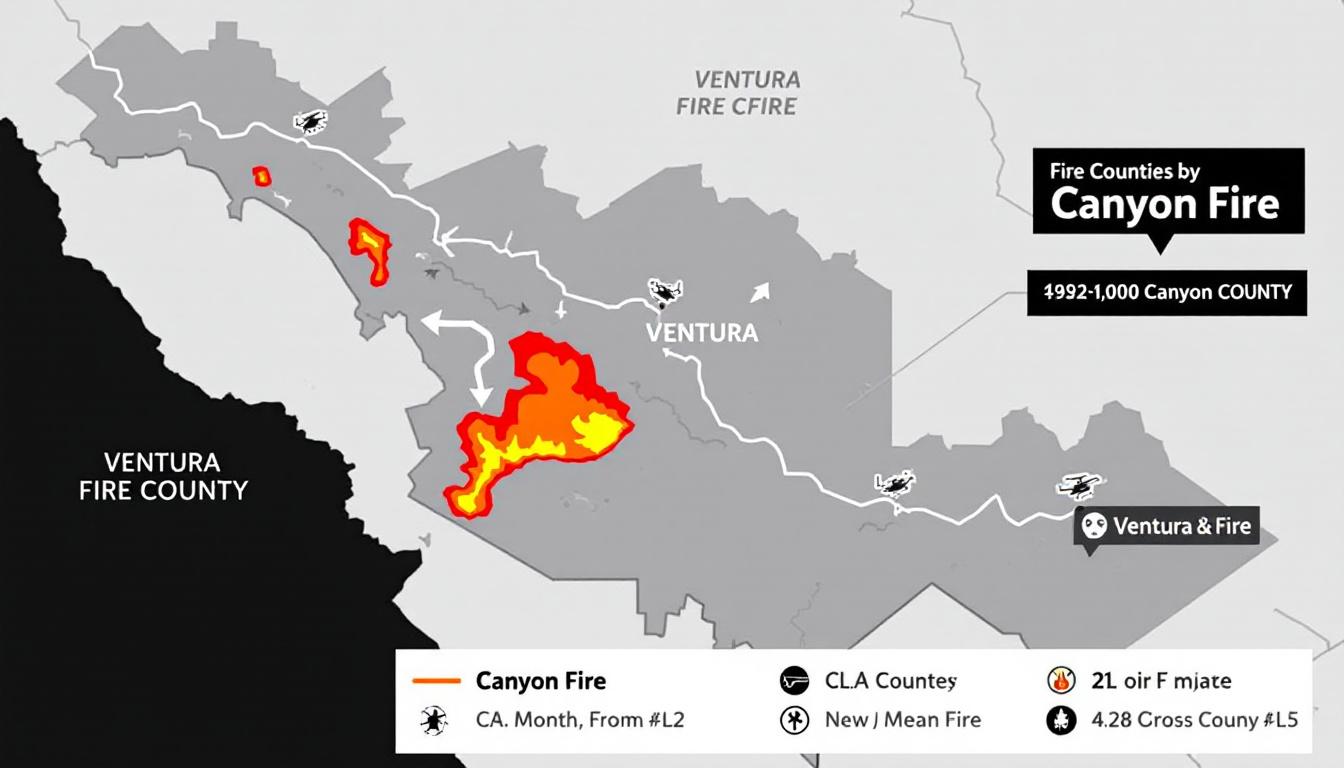California’s fire season arrived with force this August as the Canyon Fire swept across Ventura and L.A. counties. First igniting near Lake Piru, the wildfire quickly grew to nearly 5,400 acres in just hours, fueled by soaring temperatures and dry conditions. Over 400 firefighters raced to contain its advance in a challenging landscape of steep hills and persistent winds.
Fast Spread and Evacuation Impact
The Canyon Fire began on a hot, dry afternoon, rapidly jumping from 30 acres to almost 5,000 before nightfall. Low humidity, record-high temperatures around 98°F, and parched brush created ideal conditions for fast-moving flames.
Evacuation orders disrupted hundreds, but by August 8, most were lifted as crews gained a foothold. At least two small buildings were lost—luckily, no homes or major commercial properties were confirmed damaged, though some footage showed other structures engulfed by fire.
On the Front Lines: Containment Efforts

Firefighting teams coordinated aerial water drops and Red retardant delivery alongside ground crews who focused on containing “hot spots.” Building and holding containment lines was a top priority—especially in rugged terrain where high winds made conditions unpredictable.
As of August 8, the fire was about 28% contained. Continued hot weather and changing winds kept risk high, with smoke reducing visibility and triggering health advisories.
Community Impact: Smoke and Air Quality Concerns

Dense smoke from the Canyon Fire affected air quality across much of Los Angeles County. Schools and public health organizations warned families—especially the very young, elderly, and those with lung conditions—to stay inside and limit outdoor exercise. Many residents wore masks outside, with some events postponed or canceled.
Smoke advisories and air monitors have become routine during California’s extended wildfire season, which continues to start earlier and last longer each year.
Climate Change and the New Wildfire Normal
Recent research links California’s intensifying wildfire seasons with ongoing climate change. The Canyon Fire’s speed—spreading nearly 5,000 acres in one afternoon—shows how quickly fires can now grow amid ongoing drought and higher temperatures.
Climate data reveals California’s fire season begins weeks earlier than decades ago. Around the Sierra Nevada, for instance, the start has moved up by nearly a month, with drier soils and earlier snowmelt expanding the window for dangerous blazes.
Funding, Policy, and Future Risks

This year, California wildfires have already burned more than 220,000 acres and caused losses approaching $160 billion—driven by more frequent and more destructive events. The state secured federal support to cover as much as 75% of fire suppression costs for major fires like Canyon.
Experts and officials say broader changes are needed: hardening vulnerable infrastructure, reducing dangerous fuel loads, expanding early warning systems, and upgrading air quality monitoring are all critical.
Looking Forward
Canyon Fire stands as a sharp reminder that wildfire risk is now a year-round threat in much of California. As firefighters gain the upper hand, communities face months more of fire danger—and questions about how to adapt to a drier, hotter, more fire-prone future.
To contact us click Here .







